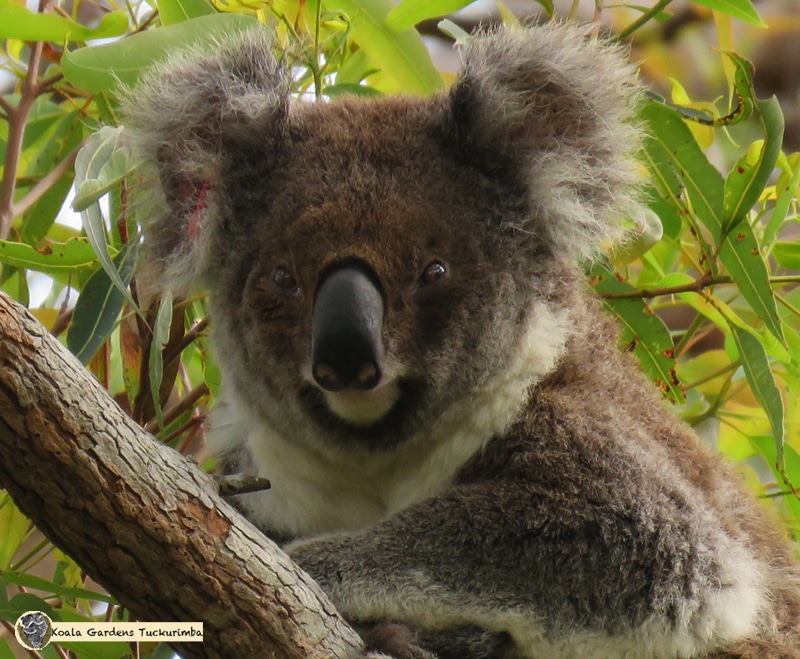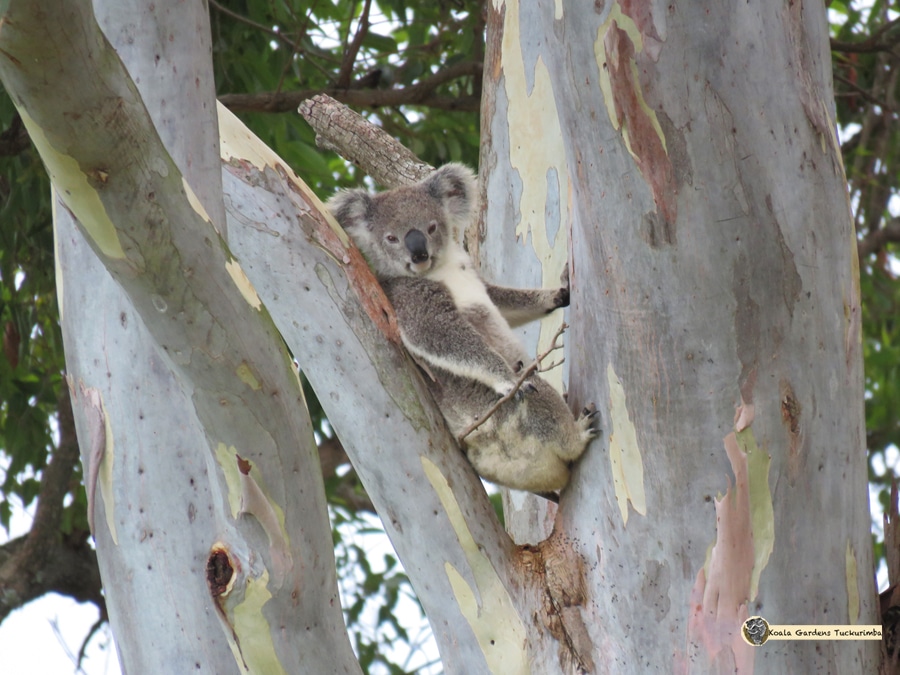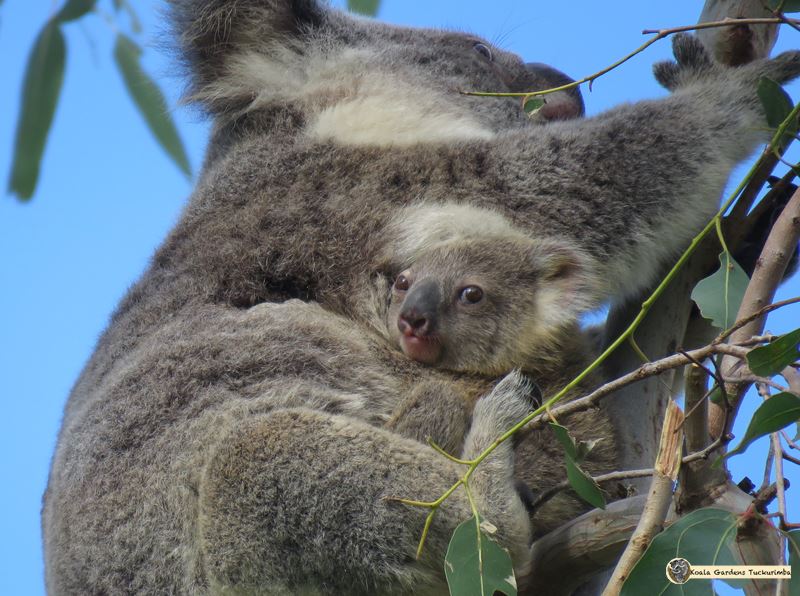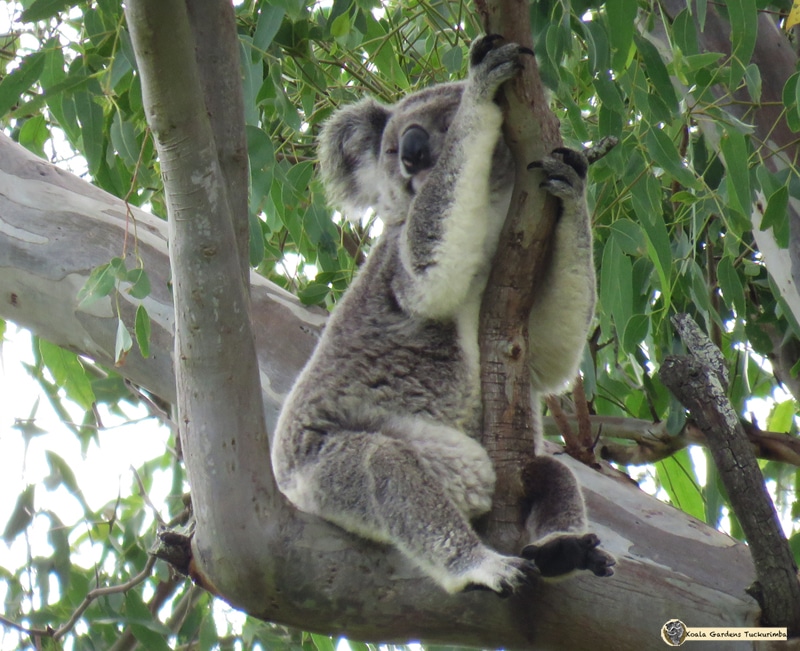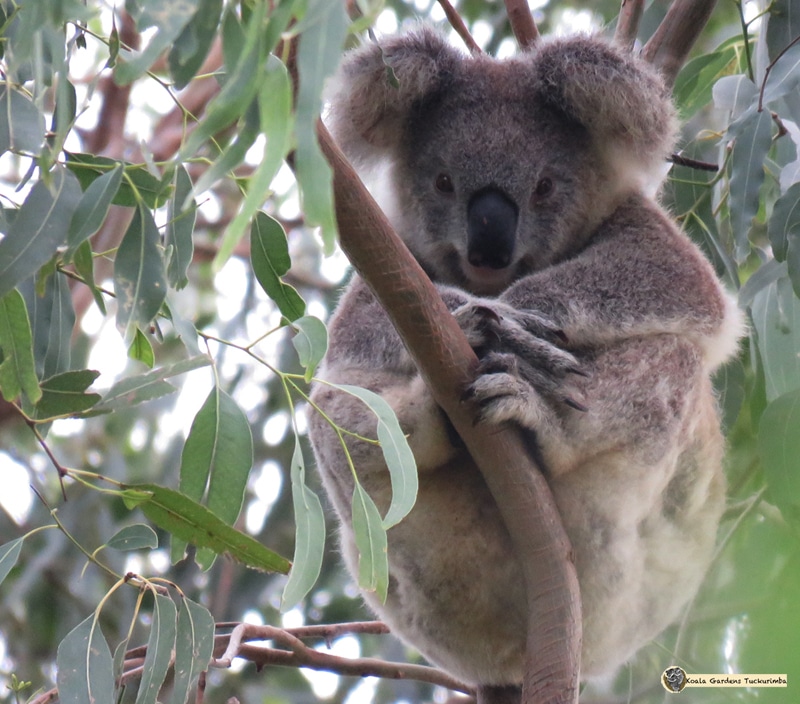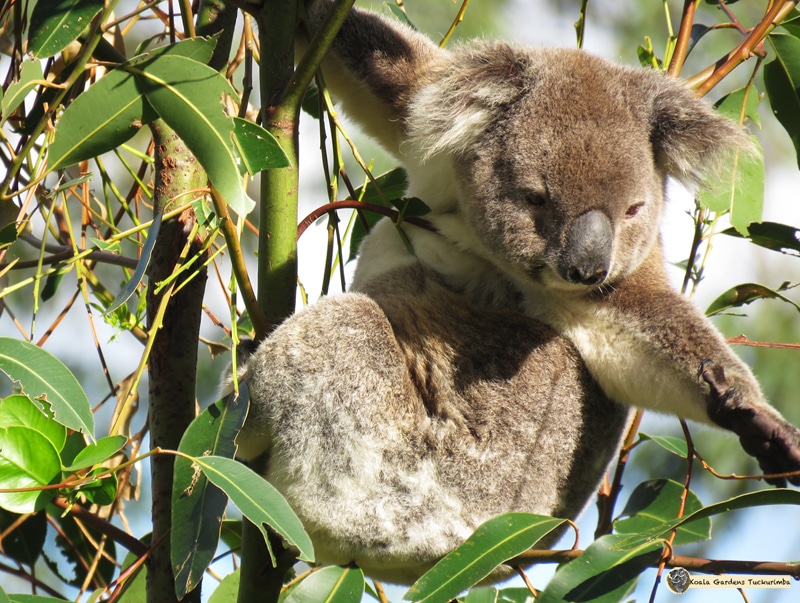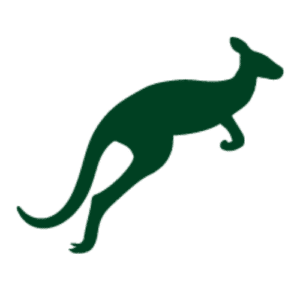Katrina Jeffery is the owner of Koala Gardens, a property located approximately 20km south of Lismore. The property is a dedicated wildlife sanctuary also used for wildlife rehabilitation and protected in perpetuity by a Conservation Agreement with New South Wales state government. It is Katrina’s intent to continue native habitat regeneration concentrating on biodiversity and the protection of the possible range of threatened species that the habitat may support. Katrina also intends to start a small tourism business on the property in the future.
Koala Gardens covers 5.6 hectares consisting of well-established mature koala food trees and a regenerating rainforest remnant. A koala colony uses the property and currently 8 colony members frequent the property. Over 3000 young native trees (less than 6 years old) have been planted or self-sown. The property is a fundamental part of wildlife corridors in Tuckurimba.
Vegetation consists of mainly Forest Red Gum – Pink Bloodwood open forest and Pink Bloodwood – Tallowwood moist open forest with a regenerating dry rainforest understory. The canopy is dominated by pink bloodwoods (Corymbia intermedia) and brush boxes (Lophostemon confertus) with some forest oaks (Allocasuarina torulosa), swamp boxes (Lophostemon suaveolens), black wattles (Acacia melanoxylon) and hickory wattles (A. disparrima).
The property features several threatened species including wompoo fruit-doves (Ptilinopus magnificus), rose-crowned fruit-doves (Ptilinopus regina), little lorikeets (Glossopsitta pusilla), red-backed button-quails (Turnix maculosus), pale-vented bush-hens (Amaurornis moluccana), grey-crowned babblers (Pomatostomus temporalis), koalas (Phascolarctos cinereus), squirrel gliders (Petaurus norfolcensis), grey-headed flying-foxes (Pteropus poliocephalus), southern myotis (Myotis aelleni), little bentwing-bats (Miniopterus australis), greater broad-nosed bats (Scoteanax rueppellii), eastern long-eared bats (Nyctophilus bifax), spotted-tailed quolls (Dasyurus maculatus).
This sanctuary is featured in Wildlife Lands 19!
Koalas don’t live in my backyard—I live in theirs. People seem to have forgotten this critical perspective in our consumer-driven society.
Only seven short years ago I thought this patch was paradise. Yet it was dead in comparison to what I have achieved. Thanks to a series of grants, nearly 1,000 native trees have been planted and a further 3,000 have been nurtured since self-sowing. I’ve had a property management plan developed and professional regenerators attend the property and follow the plan. The involvement of professional regenerators has been key to decision-making and staying on track.
To protect all this hard work, I signed a Conservation Agreement with the NSW Government in 2016. A further 350 trees have now been planted outside the conservation area on the property to grow leaf to supply to koalas in care at Friends of the Koala. In a short time the property has exploded with diverse wildlife, and the benefits to the koala population have been astounding. We know the koala is a vulnerable species and we know that habitat loss is the main cause of their demise. I track information about the koala colony and check the property over daily, using nose pattern recognition to identify individual koalas.With three years of data gathered some fascinating results are beginning to emerge. Sightings have massively increased in the past six months but the most significant result is that the koala colony has stabilised. There are far less individuals on the property now but they are staying here, not just travelling through.
This year has seen another two sources of funding secured to remove the last area of weed infestation and to establish nesting boxes for squirrel gliders and little lorikeets. Koala Gardens plans to become a model to assist people to develop sanctuaries. Finding the Wildlife Land Trust is a wonderful step towards this goal as we work together and realise we are not alone.
For daily updates on koala activity at my place visit www.facebook.com/koalagardens

